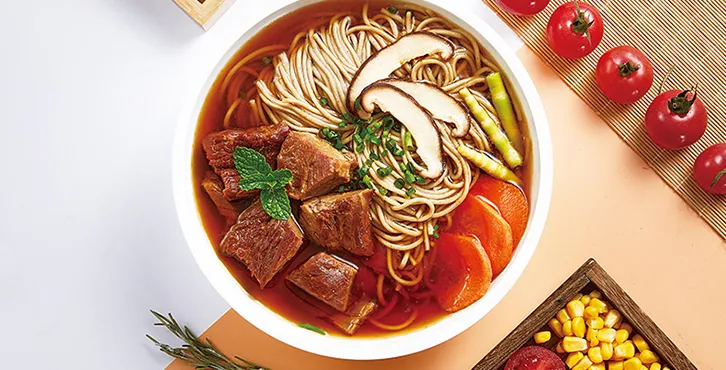soba types
Exploring the Diverse World of Soba Types and Delicacies
Soba, a traditional Japanese noodle made from buckwheat flour, has been cherished for centuries not only for its unique flavor but also for its nutritional value. The versatility of soba allows it to be enjoyed in various forms, providing a distinct culinary experience. In this article, we will explore the different types of soba, each offering its own unique characteristics and flavor profiles.
1. Zaru Soba
One of the most popular types of soba is Zaru Soba, often served chilled on a bamboo mat. This dish is typically accompanied by a dipping sauce known as tsuyu, which is a mix of soy sauce, mirin, and dashi. The simple presentation of Zaru Soba allows the natural nutty flavor of the buckwheat to shine through. It is especially popular in the summer months, providing a refreshing and light meal.
2. Kake Soba
In contrast to Zaru Soba, Kake Soba is served hot in a broth made of dashi, soy sauce, and mirin. This comforting dish is typically garnished with green onions, tempura, or even raw egg. Kake Soba is particularly favored during colder months, warming the body while providing the essential nutrients found in buckwheat. The combination of the rich broth and the chewy texture of the noodles creates a satisfying and hearty meal.
3. Nanakusa Soba
Nanakusa Soba, or seven herb soba, is a notable variant that features seasonal herbs and vegetables in its preparation. Traditionally consumed on January 7th in Japan, this dish celebrates the new year with fresh greens. The inclusion of these herbs not only enhances the flavor but also contributes to the health benefits of the dish. Nanakusa Soba embodies the essence of Japanese culinary philosophy, emphasizing harmony with nature and seasonal ingredients.
4. Tempura Soba
soba types

Tempura Soba combines the delightful crunch of tempura with the soft texture of soba noodles. The tempura, typically consisting of shrimp and seasonal vegetables, is deep-fried to perfection and served alongside or atop a bowl of soba. The contrast between the crispy tempura and the tender noodles creates a delightful texture that excites the palate. The dish is usually enjoyed with tsuyu or in a flavorful broth, making it a favorite among soba enthusiasts.
5. Tororo Soba
For those looking for something unique, Tororo Soba offers a distinct twist. This variation features grated yam (yamaimo) served over the noodles, creating a creamy texture that complements the soba. The addition of tororo not only enhances the flavor but also makes the dish more nutritious, as yam is rich in vitamins and minerals. Tororo Soba is often garnished with wasabi and green onions, providing a zesty kick that elevates the dish.
6. Soba Salad
As cuisine continues to evolve, soba has also made its way into salads. Soba Salad is a refreshing option, combining chilled soba noodles with a variety of vegetables, proteins, and a light dressing. Ingredients such as cucumbers, carrots, and sesame seeds add crunch and flavor, making this dish perfect for warm weather. The salad is often served with a soy-based dressing, allowing for customization to suit individual tastes.
7. Soba in Broth Varieties
Beyond the typical Kake Soba broth, many regions in Japan have their own unique soba preparations. For instance, in Nagano, the noodles are often enjoyed in a rich miso broth, while in Hokkaido, they may be served in a seafood-based soup. These regional variations celebrate local ingredients and flavors, proving that soba is a versatile noodle that can adapt to various culinary traditions.
Conclusion
Soba, with its rich history and diverse types, remains a staple in Japanese cuisine. Whether enjoyed cold or hot, in broth or as part of a salad, soba offers a delightful experience for any food lover. The unique flavors and textures found in the various soba dishes highlight the creativity and adaptability of this beloved noodle. So next time you find yourself in a Japanese restaurant, don't hesitate to explore the wonderful world of soba—each dish tells a story of tradition, culture, and mouthwatering taste.
-
Unleash Your Inner Chef with Delectable Italian Pasta CreationsNewsAug.01,2025
-
Savor Health and Flavor: Irresistible Soba Noodles for Sale Await!NewsAug.01,2025
-
Nourish Your Body with Premium Organic Ramen - A Culinary Delight AwaitsNewsAug.01,2025
-
Elevate Your Dishes with Our Exquisite Kinds of Egg NoodlesNewsAug.01,2025
-
Dive into Flavorful Convenience with Our Ramen OfferingsNewsAug.01,2025
-
Discover Exquisite Types of Naengmyeon and Chilled Soba NoodlesNewsAug.01,2025
-
Is Whole Wheat Pasta Healthy?NewsMay.30,2025
Browse qua the following product new the we

















































































































